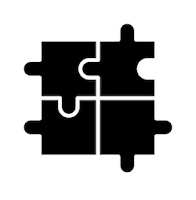Convert Outlook OST to PST
Micro Soft-Outlook obliges a wide scope of informing the needs of a business association and is generally utilized in offices for inside and outside communication. Most of the users have a Micro Soft-Exchange Server account which works in synchronization with an offline storage table file (.OST). The OST file contains all your mail things in an offline mode on your hard drive. Each time you sign in to your account, all the mail things are synchronized and downloaded into this. These OST files work in synchronization with the Micro Soft Outlook PST file. It helps in staying up with the latest with new mails, meeting demand, conveyance reports and so forth. Be that as it may, there are situations when such mail things become inaccessible. In such a situation, you need to convert emails in the OST file into an alternate Outlook compatible file format like PST.
Reasons for Conversion of Outlook OST to PST
1. Micro Soft-Exchange server can unexpectedly crash due to power failure, malicious software, virus attacks, or some other explanation. A serious accident could land you no place as you probably won't have the option to connect to the Micro Soft Exchange Server. Such situations are exceptionally testing and hard to deal with as in most of such cases they bring about rehashed display of different error messages.2. On account of Exchange Server vacation or Exchange Server maintenance, you won't have the option to get to your mailbox. In any case, now and again it turns out to be exceptionally important to approach the mailbox things. All the user mailboxes, which incorporate diverse mail things, are stored in an OST file, which works with synchronization with Micro Soft Exchange Server. To get to the mail items, you need to send out ost to pst and import it to Micro-Soft Outlook application.
3. By converting Outlook OST to PST file format, the information can be recovered considerably after accidental deletion of user mailboxes on the Exchange server.
4. Converting OST to PST helps in moving the information starting with one spot then onto the next. This is exceptionally useful on the off chance that the association is moving, or you need to move your significant information on an alternate framework.
5. OST files are the offline storage files, which let you send/get and erase emails in any event when it is not connected to Exchange Server. When connected, it gets synchronized with the Exchange Server. That implies every one of the progressions that have been made to the OST file while working offline will be reflected in the Exchange Server. Notwithstanding, this OST file may get corrupt. This will prompt detachment to user mail things. The OST file gets corrupt because of a few reasons, as referenced beneath.
- Software related issues
- Unforeseen hardware failures
- Irregular termination
- Application shutdown
- Damage instigated on the database
- Server breakdown
- Virus Attacks
- Trojans Contaminations
- Absence of Storage Space
- Accidental deletion of the user account
To defeat this situation, you need to repair the OST file. Be that as it may, you may not get the best tool to repair a corrupt OST file; henceforth, the main most ideal path is to convert a working outlook ost to pst. For this, you can utilize the reinforcement duplicate of the OST file. The PST is a file format that can store all the mail things from the OST file and you can keep working.
Such a procedure may resolve the issue, yet any manual conversion is never recommended; as they are constantly inclined to errors and comes up short on a professional approach. The procedure requires a professional tool that can convert OST file into PST format. The best choice here is to utilize a solid and tried professional tool.



























